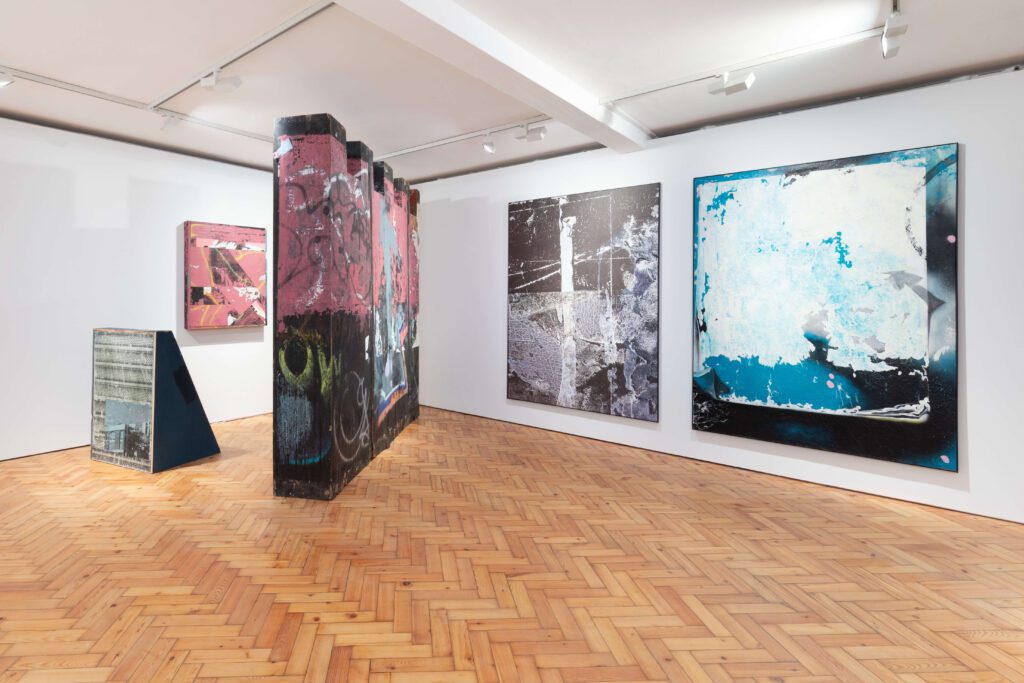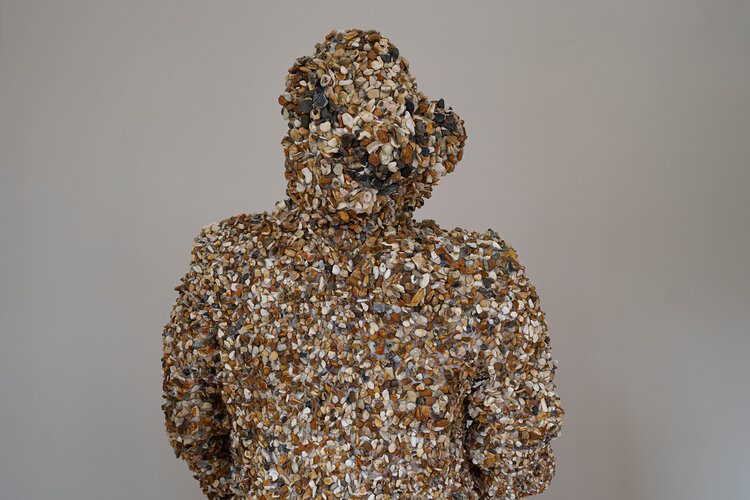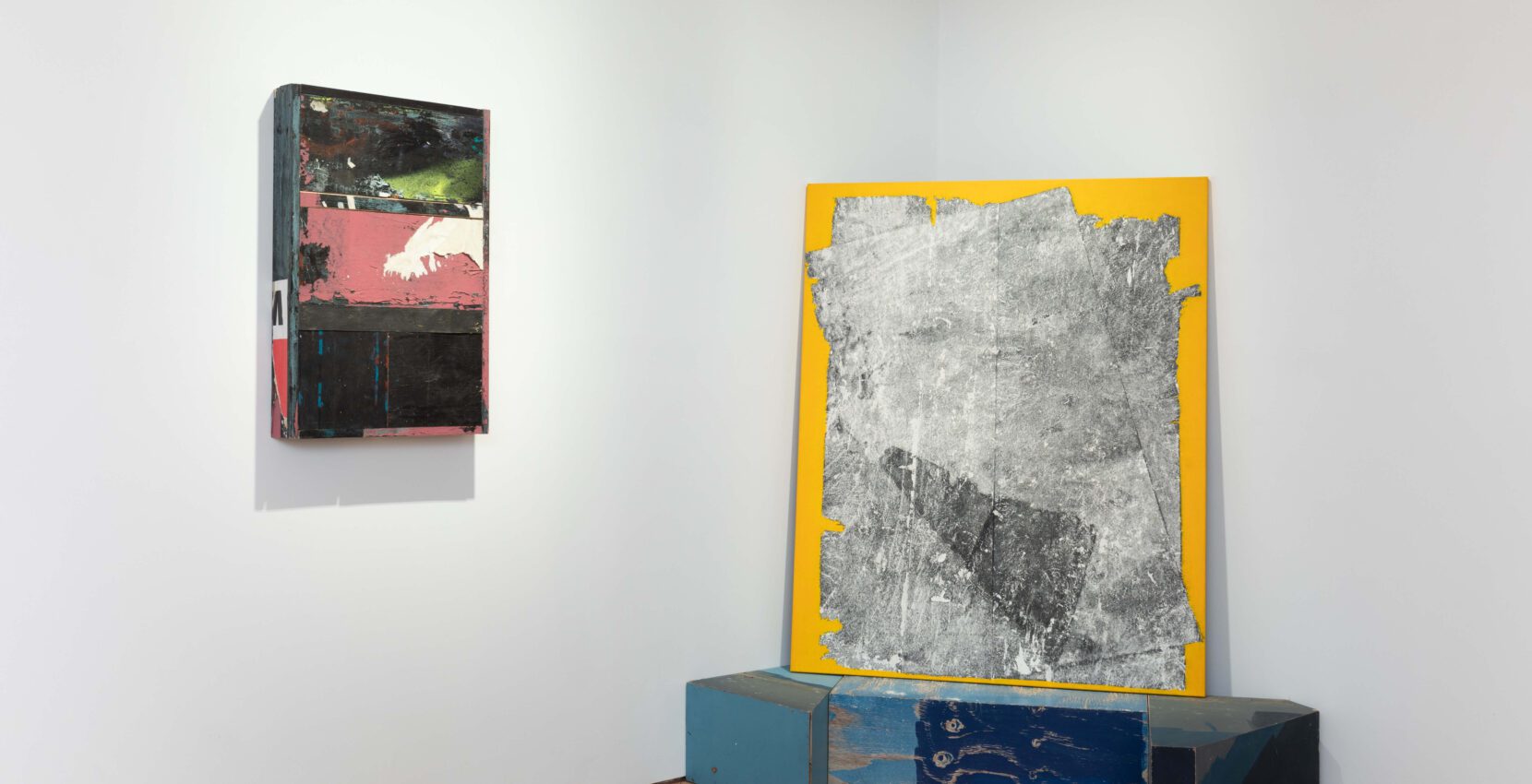Art need no longer be an account of past sensations. It can become the direct organisation of more highly evolved sensations. It is a question of producing ourselves, not things that enslave us.
-Debord, 1958
Mike Ballard’s solo exhibition Shadow Ban curated by Thorp Stavri for Shtager SHCH is the much-needed breakthrough from the ubiquitous chains of the spectacle. Located in a basement just around the corner from Oxford Street, London’s primary shopping artery Shtager SHCH feels a suitable setting for Ballard’s site-specific installation. Etymologically embedded within the digital realm and censorship, Shadow Ban intertwines visibility and invisibility of the contemporary urban landscape, shifting these boundaries and illuminating concealed plotlines entangled within the urban environment.
To reach the gallery, one should ring a bell and pass down through a common staircase, as if entering an underground speakeasy. Such a disguised atmosphere is a symbolic setting of Ballard’s practice which roots in the golden era of graffiti in the UK – when it was underground and socially daring.
The play of spaces continues within the exhibition’s body. Interested in liminal and disregarded spaces of the urban fabric, Ballard highlights unnoticed and under-used spaces, transcending them into lingering shadows of the digital realms. Entering the gallery space, visitors are immediately confronted with a site-specific installation built from found hoardings as they were on the construction sites – with patchworks of paints, glued posters, scratches and scribbles. Assembled around the perimeter of the petite corridor, this structure resembles sensations of being inside of a mediaeval gate. Entrance to the space requires viewers to bow through low arches emphasising the function of the usually unnoticeable entrance, forcing the visitors to pause, notice and interact with a space which they would not usually take into consideration.
Confronting the commercial nature of the location and the value of square metres in the heart of the shopping district, Ballard fills the gallery space. He mounts three works Yesterdays Replacement (2024), If these walls could talk, they’d probably still ignore me (2023), Exoskeleton (2023)) into a tryptic assembled along both sides of the room corner. Whereas, in the opposing corner Ballard has built a triangular plinth from found hoardings to display painting Blank Verse (2023). Teasing the white cube enterprise as a capitalist entity, Ballard disrupts yet simultaneously highlights the access to the gallery utilities. In front of the utility’s door, he built The Illusion of Freedom (2024), another immersive mediaeval-like structure from found hoardings resembling an ancient castle wall. This wall outlines a discrete nook which the visitors are drawn to and get captivated with paintings & a video loop.
The playful banter over the commercial value of art is extended in Verbal Wisdom (2023) located in the next room. Contrasting to the previous space, the curatorial method for this room is more ‘subordinate’ to the white cube space and does not challenge its geometry or function. Such a clinical setting offers a different reading to Ballard’s practice – highlighting its commercial potentials. A potent reminder of the contradiction inherent in many artistic critiques of the economic base of the art world – yet it is difficult for the artist who wishes to earn enough to sustain their practice to boycott. Five paintings assembled on the white walls captivate the potential buyers into the unconventional artistic practice intertwining with the subcultures, while Verbal Wisdom overlays signs and symbols within the context of the Capital. A found concrete sculpture of an Egyptian pharaoh with a VW badge on it is assembled on an intricate plinth made from found hoarding. An exploration of the interplay between the temporalities and their commodification, this piece is also a gentle touch upon the roots of Ballard’s graffiti background – drawing parallels between Egyptian hieroglyphs and graffiti symbols.

Thorp Stavri’s punch curation exemplifies the versatility of the white cube setting. It does not always need to be the overwhelming commercial, soulless spaces by which anti-capitalist art theory has perceived it. The space is still commercial, the artworks are still for sale – but it is not the typical glorified showroom so many spaces in the capital purely exist as. Is this not the balance of ‘producing ourselves’ while not being enslaved?
Shadow Ban: Mike Ballard, Curated by Thorp Stavri for Shtager SHCH, Lower Ground, 51-53 Margaret Street, W1W 8SQ
Thorp Stavri is a London based curatorial platform, comprising curators Eric Thorp and Nicholas Stavri. They are committed to developing and supporting artists’ practices and accessibility to art through exhibitions, collaboration, talks, workshops and a regular arts podcast.
Featured Image: Mike Ballard, Shadow Ban Installation View, 2024.

Olga Tarasova explores the interconnection between spatial and artistic practices and perception in relation to phenomenology. Her work focuses on the capability of spaces to contain elements that are unavailable for human perception and cannot be grasped. These elements manifest themselves in the experiences that affect the subject.




















